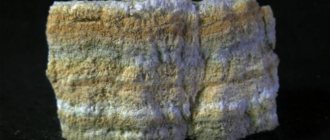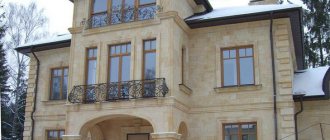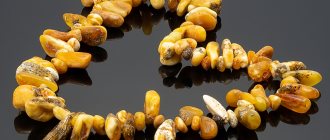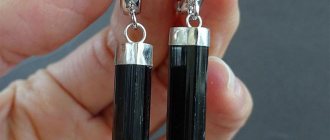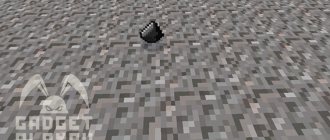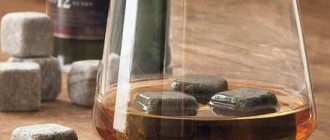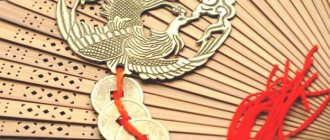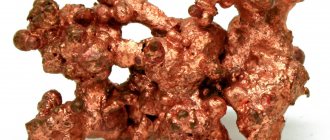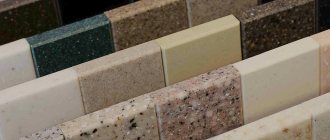Travertine is a limestone rock, a natural stone that is widely used as a building and finishing material. Both travertine tiles and travertine plaster are used, for example, on the facades of residential buildings. This is a porous material, so it must be impregnated from the harmful effects of moisture.
The construction of houses and other buildings requires the use of many different building and finishing materials. Travertine has been used for this purpose for centuries . It was already known in ancient times, as evidenced by the ancient Roman buildings that have survived to this day. What is travertine and where is it used in modern home design?
What is travertine?
Natural stone is used in construction and finishing projects for homes , commercial buildings and places of worship. The group of such materials also includes travertine. Known since the times of the ancient Romans, the stone is mainly used to decorate elegant interiors, not necessarily residential spaces, but it can also find its place there, adding charm to spaces.
Travertine is a limestone sedimentary rock with a porous structure that was formed by the precipitation of calcium carbonate from fresh water, especially hot springs . The largest deposits of travertine are located in the vicinity of Italian Tivoli, Turkish Pamukkale and the American Yellowstone National Park. It was mainly mined centuries ago from sources in Egypt, where it was called alabaster.
Travertine was used in the construction of the Roman Colosseum . An interesting fact is that this is a type of so-called calcareous necrosis. It is formed by the precipitation of carbonate in limestone areas, such as near karst caves, tectonic faults and hot springs. It is mined from quarries into stone blocks, which are then sent to factories for processing .
Its characteristic feature is high porosity, due to which the stone is light, very durable and resistant to the negative effects of external factors - both atmospheric and mechanical. Also, we should not forget that travertine conducts heat very well, so it works well as a floor covering for which underfloor heating . Available in a wide range of colors, which expands the possibilities of its use for finishing residential and commercial interiors.
Travertine - advantages
- Resistant to mold, fungi and other microorganisms
- Resistant to most mechanical damage
- Very durable
- Versatile, it can be used in most interiors
- Easy to care for
- Looks good in warm colors
Travertine - disadvantages
- Relatively fragile
- Absorbent
- Expensive
- Does not work well in contact with stain-forming acids.
Advantages, disadvantages and properties of plaster
The disadvantages of the material are the complexity of the work; in order for the result to be worthy, it is advisable to contact specialists. Also, the consumption for a better result may become higher, but travertine has more advantages:
- Environmental friendliness;
- High level of strength;
- Resistance to moisture, fire, fungus and mold;
- Beauty of coating;
- Variety of colors;
- Can hide minor flaws;
- Easy to care for the plaster layer.
The disadvantages of the material are the complexity of the work; in order for the result to be worthy, it is advisable to contact specialists.
Travertine - where can it be used?
Travertine can be used in almost most living spaces and outdoor spaces . This stone is good as heated flooring. In this case, slabs of natural travertine should be separated with flexible joints. With proper impregnation, it can be placed not only in living rooms and living rooms, but also in kitchens and bathrooms, where air humidity is higher.
Even when laid on stairs, travertine is a material that is resistant to mechanical damage and wear, sufficient to maintain its impeccable appearance for a long time.
In the kitchen, travertine works well as a kitchen countertop , which is usually prone to damage. If the user takes care to periodically impregnate it, this material can be used for decades.
Textured travertine plaster actually imitates natural stone. This is a mineral plaster with a fine-grained structure. It is made on the basis of a lime binder and is sold in powder form. Having mixed it in the right proportions with water, you can immediately apply it to the wall or ceiling. The plaster looks beautiful and at the same time is resistant to moisture, biological external factors and cleaning.
Most often, travertine plaster is used to finish part of the wall in a room, although it can also create an original frame for a fireplace. Thus, travertine slabs are also ideal due to their resistance to higher temperatures.
DIY stone border. How he performed a year later
At that time we didn’t have much cement, and to save it we came up with the idea of making corner curbs rather than square ones.
They put reinforcement inside, which was also very small, and only three pieces came out with the reinforcement. The husband threw rubble into the rest. This was experimental, so they didn’t start purchasing materials right away, but made them from what was left. To fill, my husband knocked together corner shapes from boards, on which cellophane was laid. Then they poured ready-made cement and laid out the stones, immersing them a little into the cement.
Such parts took a day to dry. It was easy to take out thanks to the cellophane.
It was easier to install such corner borders than regular ones: they easily yielded to the required shrinkage and were easier to align along the corner. On one side they were held in place by the earth, on the other they were cemented (that’s where the road runs).
After just a month, the utility workers came and said:
My husband had to remove part of the curb. And a week later they installed a new pole for us! But the old one was not removed! And we lived like this for almost 2 months, until one morning I saw this:
The pole was held by the wires by a life-worn loaf of utility workers, who, swearing a little and assuring that everything was fine and in general the way it should be, ran around and hoped that it would not collapse on our roof. I also cursed and hoped. But everything worked out, well done guys, they pulled out the old pole and left.
This was already in August, and we decided that this year we will not put the curb back in place, because... the earth around the pillar must be compacted; and postponed this event to spring 2022.
This is what our border looked like in the spring. In my opinion, everything is great!
Thanks for watching. I hope it will be useful to someone!))
How much does travertine cost?
Depending on the processing method, structure or color, the cost of purchasing travertine may vary. The price per sq.m usually ranges from 1,500 to 6,000 rubles. This makes it possible to choose tiles or other materials that fit into the planned finishing budget.
The cost of travertine tiles starts from 2,000 or more per sq.m. and it is immediately ready for installation in the right place. For travertine materials that are interesting in color and structure, you can even pay more than 15,000 rubles per sq.m. The purchase price does not include labor costs.
Main and auxiliary tools
The layer should be 1-2 millimeters thick to get the desired effect. The average consumption is 1.5-2 kilograms per square meter. The indicator is influenced by the chosen surface treatment method, the type of product and the experience of the craftsman.
Tools used:
- Putty knife;
- Brush;
- Sander;
- Roller;
- Trowel;
- Masking tape.
When working, safety rules are observed; the master must protect himself with special clothing and PPE.
The layer should be 1-2 millimeters thick to get the desired effect.
Travertine - types and patterns
Depending on the color and structure of travertine, different types are known. Egyptian travertine , known as alabaster is commonly used . This is the most durable material of this type. The stone used to make it was traditionally quarried, although its location is of little importance today. Egyptian travertine is used to decorate both ancient and modern interiors . Available in a wide range of colors.
Travertine marble , a limestone rock, is deceptively similar to natural marble in both pattern and color. Dark travertine, such as dark gray, is rare.
Due to the variety of processing techniques used to process travertine blocks, different variations of this material can occur in terms of surface and texture:
- matte travertine;
- polished, has a shiny surface;
- chiseled, with edges finished with an antique hammer;
- brushed, having a porous matte surface;
- inverted, with a porous surface and rounded edges;
- cut, with a chipped and rather coarse structure;
- with resin filled pores for a matte finish.
Travertine mosaic tile is a travertine putty that has no pores for dirt to penetrate. Such mosaics, for example, in the bathroom, are easier to keep perfectly clean.
History of origin and composition
The use of stone to enclose and transform the appearance of a building has been known since ancient times. A room made of stone material seems eternal and durable.
The Romans began to use plaster material filled with stone chips. The choice of decorative plaster Travertino was in demand during the Florentine period, the mortar was used on a par with marble.
A famous travertine structure is the Colosseum.
A famous travertine structure is the Colosseum.
How can you use travertine in the interior?
Natural travertine can come in different colors and shapes. This is a material with numerous holes created during formation. It can be used to make tiles, stone veneers, after polishing, decorative elements without putty, and countertops without holes filled with a binder or putty designed for natural stone. However, most often travertine for a floor or wall comes in the form of stone tiles, and travertine for a facade comes in the form of plaster.
Due to the strength and solidity of travertine, it can be safely used in the hallway or in the living room, and due to its good thermal conductivity, it can be used to cover underfloor heating systems. Tile-style mortar can be used as bathroom wall , but it needs to be soaked in order for it to last. Bathroom countertops and bathtub covers are also made from travertine.
Travertine tiles can be cut in two ways - across the veins, which creates a uniform structure (called a cross-cut), or along with the stripes formed on the slab, which result from the cross-section of rock layers (called Vein-Cut).
A travertine countertop can become an accent in the kitchen or be combined, for example, with travertine tiles on the walls . Outside, this material is used on the terrace due to its high resistance to mechanical damage. It can be used to decorate terraces, edges of swimming pools or garden paths .
To save money, you can use its imitation instead of natural travertine . There are ceramic tiles on sale, which very well imitate the appearance of travertine, and mineral plasters, which, when installed correctly, have a structure similar to this material. Ceramic tiles imitating travertine are cheaper than this material in the form of natural stone, and they will look good, for example, on large surfaces of walls or floors in the bathroom, kitchen, living room or hallway.
Distinctive features of the breed
Anyone at least somewhat interested in the origin and varieties of natural minerals asks the question: “What types of travertine stone are there? How does this stone differ from other facing rocks?”
Despite its porosity and the abundance of small voids, crevices and various mineral inclusions, travertine is much less permeable than marble or limestone, but is inferior in strength to basalt and granite. Due to the fact that the rock is relatively soft and its extraction is easier than marble or labradorite, and is also widespread throughout the world, the cost of travertine is significantly lower than other minerals.
Travertine - is it worth choosing?
Travertine is a natural stone, which means it is an original material that brings unique style to residential interiors and much more. Even identical travertine slabs can have a slightly different pattern - they will not be identical, unless we are dealing with imitation travertine. This material has numerous pores that are visible to the naked eye. Due to its porous structure, it is easily absorbed and therefore requires impregnation.
The advantage of travertine is that it is an alkaline material, that is, it creates an environment unfavorable for the development of various microorganisms, so it is not susceptible to the development of mold and fungi . Maintains an impeccable appearance for many years. It is considered a long-lived stone, which in ideal condition can last hundreds of years - it is resistant to mechanical damage and higher temperatures.
As a material with many different uses, travertine can be considered a versatile product, used inside and outside the home , even in difficult conditions of high temperature or humidity (after impregnation).
Decorative works
Travertino plaster is not limited to applying the main layer; it is also necessary to carry out other work afterwards that will provide the desired effect. Additional steps:
- Sanding, the main part will become glossy and the recesses will become darkened.
- Tinting, a new shade will highlight the pattern of the stone.
- Apply wax to increase moisture protection.
- Applying varnish; it is advisable to protect the painted surface with a varnish coating.
Travertino plaster is not limited to applying the main layer; it is also necessary to carry out other work afterwards that will provide the desired effect.
What else is worth knowing before choosing decorative travertine?
If you are going to use travertine in residential or commercial interiors , you must know how to handle it on a daily basis. Cleaning such a stone with water and a small addition of regular dishwashing detergent is not a problem. Do not clean travertine with harsh chemicals as this may cause unattractive discoloration. The colors can no longer be restored.
What color can travertine be? Gray is rare in his case, as is white. Most often it comes in warm shades - from cream to brown and yellow. It can have individual layers of orange or even red, creating a beautiful pattern on the tile.
In general, travertine has a light shade, but even tiles from the same batch may vary slightly, as well as the pattern. The structure of the stone is unique each time and produces remarkable visual effects depending on the direction in which the stone blocks are cut.
Everyday life of stone processing, vol. 42
All over the world, travertine can be found at the following “addresses”:
Pyatigorsk, Gatchina district of the Leningrad Region, Kamchatka, Tivoli (Italy), Cannstatt (Germany), Pamukkale (Turkey), Salakit and Altavaedskoye field (Armenia), Nakhchivan and Kelbajar (Azerbaijan), Sary-Tash, Chagyr-Tash and Zhalpak-Tash ( Kyrgyzstan) and Objarrot (Tajikistan), as well as in other countries.
The difference in travertine colors is determined by the depth of occurrence, environmental influences and chemical processes occurring in the rock even after extraction.
For example, the travertine of the Sary-Tash deposit has two levels of rock occurrence.
The first layer of stone (akerro) has a beige-brown color, pronounced spots, and, if you are very lucky, fragments of shells.
The second layer (kerio) has a soft beige color and is more uniform, with rare dotted inclusions.
Likewise, travertine from other deposits may have different colors, shades, patterns and other differences.
By the way, in the photographs above are the travertine pools of Pamukkale in Turkey. Incredible beauty, isn't it? =)
How to lay travertine?
How to lay travertine? Contrary to appearances, this is a simple task. One of its features is that it can be applied directly to all types of plaster and you do not need to apply a finishing coat under the stone. Instead of using travertine as a natural stone on walls or floors, you can apply it to the wall as plaster.
Also, you need to properly prepare the base, that is, clean it of dirt and dust, and smooth out larger cavities and putty.
The next step is to coat it with a primer, such as primer. The substrate prepared in this way is suitable for applying travertine to plaster after mixing the bulk mixture in appropriate proportions with water. travertine plaster is gradually applied , thus obtaining the structure of natural stone.
How to inexpensively make a swimming pool in the garden without a project.
about the need for design during construction.
I completely agree with the author of the post. I'm just doing it wrong.
In the early 90s, my father and I started building a house. They dug a pit and installed the foundation. They put the box down and closed the roof. We finish and install the systems. Mom takes care of the garden.
And so my mother turns to us with a request: not far from the house there is a boulder, partially in the ground, we need to turn it upside down and make room for garden beds.
One of the neighbors had a Belarus tractor with a bucket working. They called. He arrived, hooked it with a ladle, pulled it, and scraped off part of the stone from above. It caught on tighter, and the blade on which it rested in front came off the ground. He stopped and said that heavier equipment was needed: “a very big stone, apparently.”
“bristled”, he stubbornly resisted.
Autumn. We abandoned this matter until next year.
Mom reminds me of spring.
Slush, clay, equipment gets stuck. We put it off until summer.
In the summer, the colossus of the Chelyabinsk Tractor Plant comes to the neighboring state farm fields to lay drainage and irrigation systems. The bulldozer, it seemed to me, was as tall as a house, with a blade taller than me and with a huge fang at the back. This is who can remove our stone, my father and I decided, and we went to negotiate. Agreed.
That's what we did. We found a pneumatic excavator, agreed, as with all its predecessors, on payment for the result. He arrived and started digging. I dug a hole 5x4 meters and went 5 meters deep, but the stone still didn’t end. Gave up. They asked me to bury what I had dug up. He cursed and left.
Instead of just a stone, we ended up with a huge pit with a stone (it turned out to be a rocky outcrop), a huge pile of clay and an extremely dissatisfied mother.
Fortunately, it’s autumn, winter, spring again. We remember, but at least we don’t need to do anything with this hole.
Travertine - standard tile or modern flooring?
The neutral color makes this material suitable for bedroom or living room flooring. In its most durable version, it is suitable for both the kitchen and the bathroom. In fact, you can use it in any home decor. On the other hand, experts emphasize that it cannot be used in public places. Very high use and high traffic may cause some changes to the ground to be visible, affecting its appearance.
Caring for natural travertine surfaces
To preserve the pristine beauty of travertine finishes for as long as possible, you need to take care of them. Immediately after installation, it is recommended to treat the surface with a special impregnation that closes the pores. It will not affect the appearance in any way, but will create a protective microlayer that will prevent the penetration of dirt and protect it from rapid abrasion. In addition, it is recommended:
Regular wiping. Dust should be periodically removed with a damp sponge or soft cloth soaked in a special product for caring for natural stone.
Quick removal of liquids. Travertine finishes are sensitive to acidic substances. Therefore, if wine, vinegar or other liquids are spilled, they should be removed as soon as possible and the area of contamination should be washed with water.
Despite careful care, scratches and small cracks still appear over time. The problem can be eliminated by grinding, but the procedure must be performed by a qualified specialist who knows how to work with natural stone.
Travertine in the kitchen - interior decoration
Besides granite and quartz, travertine is one of the most popular natural stones used in kitchens. Most often it appears on the surface next to the kitchen countertop . However, with the same success it can be installed on the entire wall, which will be lined with this material.
Travertine or stone imitation are ideal for both classic interiors and retro-style kitchens. Well soaked, do not require special attention - just regular wiping.
Surface preparation and application of plaster
The material is applied to a prepared base; there is no need to perfectly level the wall. A porous coating can cover small defects.
A deep penetration impregnation based on acrylic is applied to the cement base. The gypsum, chipboard and fiberboard base is processed in several layers. After priming is carried out, you must wait for complete drying before the next stage of work.
The material is applied to a prepared base; there is no need to perfectly level the wall.
The bathroom is the ideal room for travertine
Usually in the bathroom they choose a classic solution, most often tiles. However, if you want to highlight your interior a little and give it some character , you should consider using natural stone - travertine.
In the bathroom it will look great both on the wall and on the floor. It is quite resistant to various types of damage and, in addition, is associated with nature. Thus, its use provides high interior aesthetics .
Travertine washbasins can also be quite an unusual choice. They are extremely original and associated with luxury. Unfortunately, when choosing such equipment, you need to take into account that it is slightly more expensive than standard products. Some models even cost several tens of thousands of rubles.
Plastering methods
You can apply the plaster solution completely to the base, or use the spray method. As a result, with the first method there will be grooves on the base over the entire area, with the second the layer will be in the tubercles. Features of the technology will be described below.
You can apply the plaster solution completely to the base, or use the spray method.
Creating a continuous coating
First, the surface is simply plastered; you can move on to decorative work when the second layer close to the surface has become hard and the outer part is still wet.
It is necessary to create the necessary recesses on the base. A spatula and a steel trowel are used. For beginners, it is more convenient to use a hard brush. The cost of this method is higher than that of the next one.
First, the surface is simply plastered; you can move on to decorative work when the second layer close to the surface has become hard.
Partial plastering
This technique is easier to perform for beginners. It is easier to make uneven surfaces than to achieve a glossy surface. It is necessary to spray the wall in equal proportions so that the flat and convex parts are the same.
The tool you can use is a square brush, a rag, or a sponge.
It is easier to make uneven surfaces than to achieve a glossy surface.
Modern living room - travertine in the title role
Travertine for the living room can be used in different ways. You can use it on the entire wall surface or on the floor. Then you will achieve a palace effect, and the interior will be extremely luxurious. This is the perfect addition to a glamorous style.
a fireplace in your living room , but are you a little bored with its appearance? Now is a good time to freshen it up with travertine.
If you do not plan to hang curtains in the living room, you should think about finishing windows or balcony doors with this material. Then you will get a unique and interesting effect .
